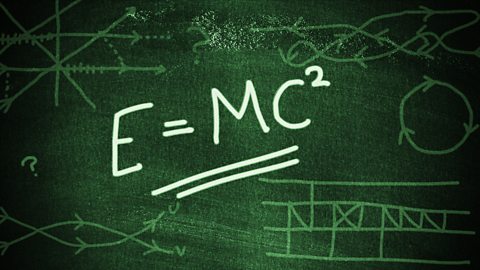Scientific Discovery: A Historically Collaborative Effort


“If I have seen further than others, it is by standing upon the shoulders of giants.” This quote by Isaac Newton says it all. With billions of people on the earth, we can’t discover the universe alone. Usually one scientist is credited with a specific discovery that has changed our beliefs about the scientific world, but in reality these discoveries don’t just come to these scientists as prophecies. These revolutionary ideas, such as E = mc2, are actually the works of many people over time, reviewed and expanded upon by the great scientists we praise today.
Albert Einstein’s great equation E = mc 2 begins with Energy (E) and depends upon the contribution of Michael Faraday in this regard. Faraday worked under renowned British scientist Sir Humphry Davy as a chemist’s assistant in England in the early 19th century. Faraday was fascinated with energy and believed that electricity emitted an outward force, which was a revolutionary idea contradictory to the common belief at the time that electricity flowed through a wire in a straight current like water. Despite scepticism from his peers and superiors, Faraday was convinced of his hypothesis and was determined to test it. In 1831 he conducted an astonishing experiment in which he created an electromagnetic field, while inventing the first electric motor and proving his hypothesis in the process. This discovery involving energy was a major piece in the puzzle of E = mc2 that would eventually be put together by Albert Einstein.
The “m” of that famous equation stands for mass, a concept greatly advanced by Antoine Lavoisier, a French chemist in the mid to late 18th century. Lavoisier knew that when iron rusted, it became lighter. He believed that matter could not be created or destroyed and that the missing mass of the rusted iron had actually combined with the air. Lavoisier tested his hypothesis by performing experiments in which he heated elements in enclosed containers containing air. He found that new substances were formed but that the container and its contents still weighed the same as they did before heating. When he carefully measured the masses, he found that the new elements were heavier than the originals before heating. He checked the masses of the air and the elements with extreme accuracy and found that indeed no mass was lost. With this discovery, Lavoisier established the law of conservation of mass, and another piece of Einstein’s puzzle fell into place.
The relationship of the speed or velocity of light (“c” in Einstien’s equation) to energy was perhaps the most difficult part of the formulation to be discovered. The speed of light had already been fairly accurately estimated in the late 17th century by the Danish Astronomer Ole Roemer at about 670,000,000 mph. Two centuries later, a Scottish physicist named James Clerk Maxwell used Roemer’s estimation of the speed of light and expanded on Faraday’s idea that electricity and magnetism could transform into each other, finding that when a light beam moves, electricity and magnetism form one after the other like a braid twisting and moving forward. In a related development, French scientist Emilie du Chatelet, after studying the work of Dutch researcher Willem Gravesande, recreated his experiment of letting brass balls fall into a slab of clay from different heights. At the time, it was believed that if a ball was dropped from twice its first height, it would sink twice as deep, but instead it fell four times deeper, indicating a squared relationship This disproved the idea that energy equals mass times the velocity, and led to the theory that energy equals mass times the velocity squared. These truly amazing discoveries by this group of scientists later helped Einstein understand light and its relationship to energy, and determine that the speed of light must be squared in his equation.
So, as the above historical incidents illustrate, the progress of science is not advanced through one individual, but through the work of many around the world. The revolutionary discovery that E = mc2 was not made by Einstein alone but instead was based on the work of great and courageous scientists who experimented centuries before him, such as Faraday, Lavoisier, Maxwell, and du Chatelet. Their work enabled him to finally put all the pieces of mass, energy, and the speed of light together to conclude that energy equals mass times the speed of light squared, one of the greatest scientific theories of all time.
Works Cited
Michael Faraday (1791-1867). BBC. BBC, n.d. Web. 28 May 2016.
Faraday. Faraday. N.p., n.d. Web. 28 May 2016.
The Mass of Matter. Properties of Matter Reading Selection: The Mass of Matter. N.p., n.d. Web. 28 May 2016.
Weisstein, Eric W. Lavoisier, Antoine (1743-1794). Science World. Eric W. Weisstein, n.d. Web. 28 May 2016.

